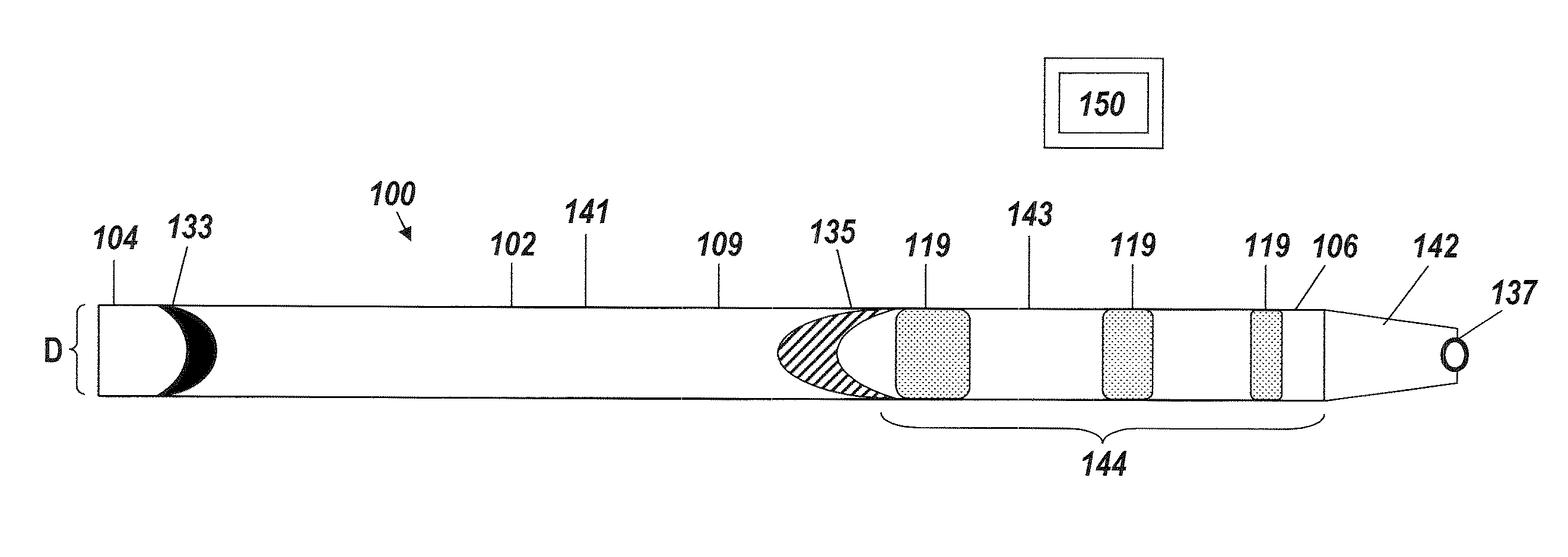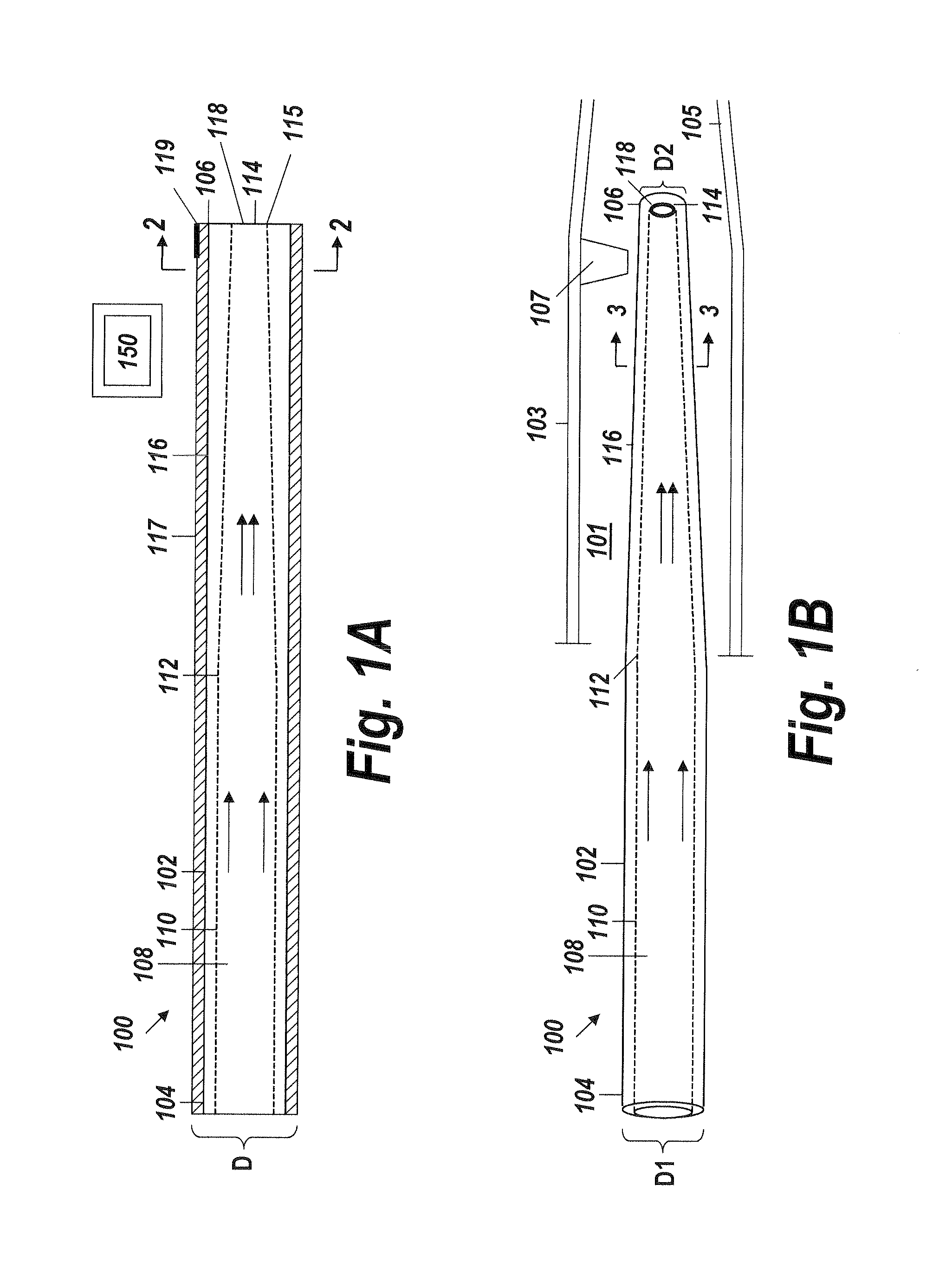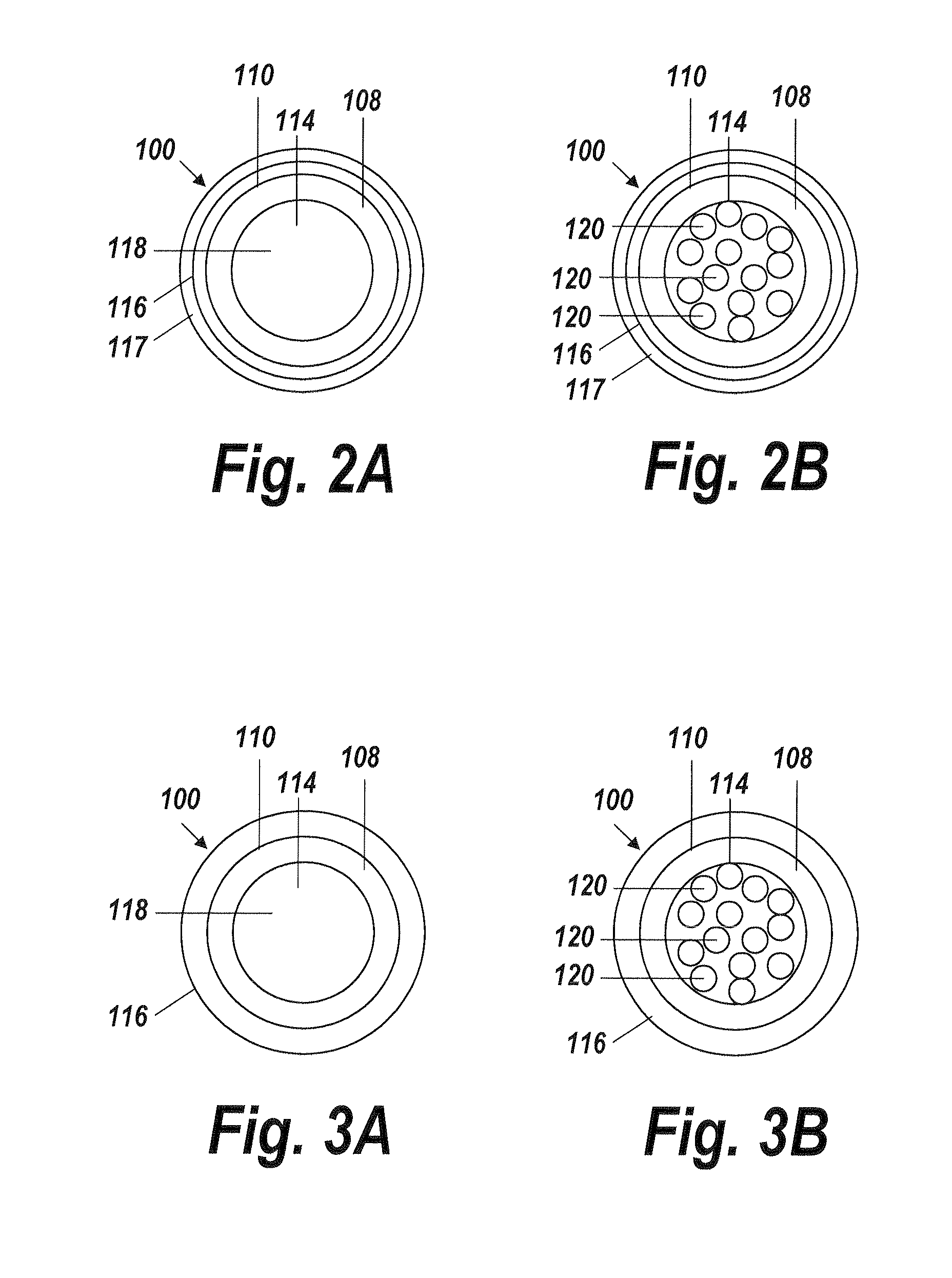Body lumen fluid delivery device
a delivery device and body lumen technology, applied in the field of fluid delivery devices, can solve the problems of damage to the body, no image viewable area of the delivery device, no means to concentrate the medication, etc., and achieve the effect of avoiding jetting and pressure damag
- Summary
- Abstract
- Description
- Claims
- Application Information
AI Technical Summary
Benefits of technology
Problems solved by technology
Method used
Image
Examples
Embodiment Construction
[0042]An illustrative embodiment of the present invention relates to use of a fluid delivery device structured to navigate tortuous, spatially restricted body anatomy having narrow body channel diameters (e.g., as narrow as about 1 mm or less) for the high concentration delivery of a fluid, such as a medication, therapeutic agent, or diagnostic, to a target treatment area within the body. The present invention makes use of a biocompatible, flexible conduit having a maximum outer diameter sized in such a way as to enable navigation of narrow body channels (e.g., vessels), and a micro-lumen terminating within an image viewable zone along the flexible conduit provided with a pre-determined cross-sectional flow area for continuous localized delivery of high concentrations of the fluid to fill the entire treatment area within the narrow body channel around the outside of the image viewable zone along the flexible conduit at a pressure sufficient to minimize and or avoid damage to surroun...
PUM
| Property | Measurement | Unit |
|---|---|---|
| Temperature | aaaaa | aaaaa |
| Length | aaaaa | aaaaa |
| Length | aaaaa | aaaaa |
Abstract
Description
Claims
Application Information
 Login to View More
Login to View More - R&D
- Intellectual Property
- Life Sciences
- Materials
- Tech Scout
- Unparalleled Data Quality
- Higher Quality Content
- 60% Fewer Hallucinations
Browse by: Latest US Patents, China's latest patents, Technical Efficacy Thesaurus, Application Domain, Technology Topic, Popular Technical Reports.
© 2025 PatSnap. All rights reserved.Legal|Privacy policy|Modern Slavery Act Transparency Statement|Sitemap|About US| Contact US: help@patsnap.com



